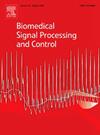ODCS-NSNP: Optic disc and cup segmentation using deep networks enhanced by nonlinear spiking neural P systems
IF 4.9
2区 医学
Q1 ENGINEERING, BIOMEDICAL
引用次数: 0
Abstract
Accurate segmentation of the optic cup (OC) and optic disc (OD) is crucial for early glaucoma detection. Despite various deep learning-based methods for OC and OD segmentation, challenges persist, including loss of prior information, blurring from down-sampling, and limitations of simple networks. To address these issues, this paper introduces ODCS-NSNP, a deep segmentation network for OC and OD based on nonlinear spiking neural P systems. ODCS-NSNP utilizes a densely connected depth-separable network unit (SDN-Unit) to enhance network width and depth. Unlike existing approaches, it integrates a nonlinear spiking neural convolution model to redesign convolutional units and resampling operators, facilitating the fusion of multi-scale features and preserving critical details and edge structures in retinal images. Experiments conducted on the RIM-ONE-r3, Drishti-GS and REFUGE datasets evaluate ODCS-NSNP’s effectiveness. The proposed method achieved high performance across three benchmark datasets, with average Dice, IoU, and Sensitivity scores of 0.9724/0.9815 (OD/OC) in RIM-ONE-r3, 0.9625/0.9325 (OD/OC) in Drishti-GS and 0.9687/0.990 (OD/OC) in REFUGE. The experimental results highlight the strong segmentation performance of our proposed network in comparison to the leading contemporary models. Our code is available at: https://github.com/liwangcsedu/ODCS-NSNP.
ODCS-NSNP:使用非线性尖峰神经P系统增强的深度网络进行视盘和杯分割
准确分割视杯和视盘对青光眼的早期诊断至关重要。尽管有各种基于深度学习的OC和OD分割方法,但挑战仍然存在,包括先验信息的丢失、下采样造成的模糊以及简单网络的局限性。为了解决这些问题,本文介绍了一种基于非线性尖峰神经P系统的OC和OD深度分割网络ODCS-NSNP。ODCS-NSNP采用密集连接的深度可分离网络单元(SDN-Unit)来增强网络的宽度和深度。与现有方法不同,该方法集成了非线性尖峰神经卷积模型,重新设计了卷积单元和重采样算子,促进了多尺度特征的融合,并保留了视网膜图像的关键细节和边缘结构。在RIM-ONE-r3、Drishti-GS和REFUGE数据集上进行的实验评估了ODCS-NSNP的有效性。该方法在3个基准数据集上均取得了较高的性能,RIM-ONE-r3的Dice、IoU和Sensitivity平均得分分别为0.9724/0.9815 (OD/OC)、0.9625/0.9325 (OD/OC)、Drishti-GS的0.9687/0.990 (OD/OC)。实验结果表明,与当前领先的模型相比,我们提出的网络具有较强的分割性能。我们的代码可在:https://github.com/liwangcsedu/ODCS-NSNP。
本文章由计算机程序翻译,如有差异,请以英文原文为准。
求助全文
约1分钟内获得全文
求助全文
来源期刊

Biomedical Signal Processing and Control
工程技术-工程:生物医学
CiteScore
9.80
自引率
13.70%
发文量
822
审稿时长
4 months
期刊介绍:
Biomedical Signal Processing and Control aims to provide a cross-disciplinary international forum for the interchange of information on research in the measurement and analysis of signals and images in clinical medicine and the biological sciences. Emphasis is placed on contributions dealing with the practical, applications-led research on the use of methods and devices in clinical diagnosis, patient monitoring and management.
Biomedical Signal Processing and Control reflects the main areas in which these methods are being used and developed at the interface of both engineering and clinical science. The scope of the journal is defined to include relevant review papers, technical notes, short communications and letters. Tutorial papers and special issues will also be published.
 求助内容:
求助内容: 应助结果提醒方式:
应助结果提醒方式:


